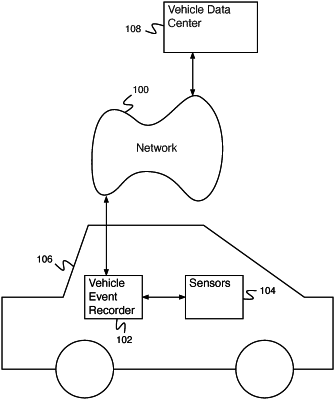| CPC G08G 1/09675 (2013.01) [G08G 1/09626 (2013.01); G08G 1/164 (2013.01)] | 18 Claims |

|
1. A system, comprising:
an interface configured to:
receive accident data or event data; and
a processor configured to:
determine a set of incident groups, wherein an incident group of the set of incident groups is associated with a set of accidents of the accident data or a set of events of the event data that are grouped by location proximity;
determine a set of traffic estimations, wherein a traffic estimation of the set of traffic estimations is associated with the incident group of the set of incident groups; and
determine a ranking of the set of incident groups based at least in part on the set of accidents or the set of events and the set of traffic estimations, comprises to:
merge compatible incident groups of the set of incident groups, comprising to:
identify initial hotspots, wherein the initial hotspots include initial crash clusters;
determine that similar overlapping hotspots along a road are compatible; and
merge compatible similar overlapping hotspots along the road, wherein the compatible similar overlapping hotspots have at least one of the following: the compatible similar overlapping hotspots have a road segment in common, the compatible similar overlapping hotspots are within an N meter distance, and/or the compatible similar overlapping hotspots' surface area overlap by at least predetermined percent;
determine an incident group score associated with each incident group, wherein the incident group score is based at least in part on 1) the set of accidents of the accident data associated with the incident group and a set of accident weightings, or 2) the set of events of the event data associated with the incident group and a set of event weightings, and 3) the traffic estimation of the set of traffic estimations associated with the incident group.
|